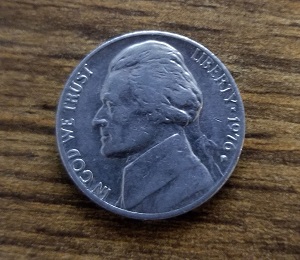
Photo credit: jb
In other articles we’ve covered the Age 55 rule for 401k plans – where you’re allowed to withdraw money from your 401k penalty-free if you leave employment at or after age 55. But there’s a downside to the Age 55 rule that you need to know about. We’ll cover the downside today.
When you reach age 55 and leave employment, you may be looking to use your 401k plan as your source of income needs for a few coming years. Perhaps you plan to withdraw from the 401k until you reach age 59½, when you’ll have access to other deferred money, or maybe until you reach age 62 and start receiving Social Security.
But there could be a problem in your strategy. Your 401k administrator might only allow a one-time lump-sum withdrawal from the plan! Many plans have this restriction – the reasoning being that they see the plan primarily as an accumulation vehicle, and they do not want to be in the position of maintaining long-term distributions.
So, for example, Steve retires from his job at age 56, knowing that he can take withdrawals from his 401k plan without penalty. So when he maps this out, he needs approximately $50,000 from his 401k plan each year. He needs this amount until he reaches age 62, when he’ll start taking his Social Security and drawing his pension.
When Steve contacts the 401k administrator to set this up, he learns that the plan only allows a lump sum distribution! This means that Steve would have to take a distribution of $150,000 to get him to age 59½. Of course this would result in significantly more tax than Steve anticipated, but there’s not much else he could do, other than going back to work. (It should be noted that not all 401k plans have this restriction – many will allow multiple withdrawals, but many do restrict withdrawals to a one-time lump sum. Check with your plan administrator as you devise your strategy.)
If he rolls over the 401k plan to an IRA, the Age 55 rule no longer applies. However, Steve has another option that can help the overall tax situation, by staging his withdrawals.
Staging Withdrawals
If Steve took the entire lump sum of $150,000 from his 401k in one year (rolling over the rest of the account to an IRA), the tax would be approximately $32,070, since he’s single. If he was married, the tax would be approximately $23,778. But, since he only needs $50,000 in the first year, he could withdraw that $50,000 for a tax cost of approximately $5,940 ($3,448 if he was married). The remaining 401k would be rolled over into an IRA.
Then in the subsequent years, Steve could take “early” withdrawals of $50,000 each year, paying the 10% penalty. His total tax each of the two following years (his age 57 and 58) would work out to $10,940 per year (or $8,448 if he was married). So his total tax for the three years amounts to $27,820 – a savings of $4,250. If he was married the total tax would have been $20,344, saving $3,434 by staging. However, any way you look at it, this is costing an extra $10,000 in penalties, so it’s not the boon you thought it would be (if your plan is restricted like this).
Often, the best option to deal with this downside to the Age 55 rule is to come up with some other source of income during the intervening years. A part-time job could be the answer, helping Steve through the couple of years before he reaches age 59½. Or perhaps one of the other exceptions to early withdrawal could apply for a portion of his income needs. At age 59½ he could have the entire amount rolled over into an IRA and he’d have unfettered (unpenalized) access to the money in any amount.